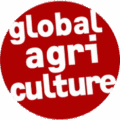
Between 2003 and 2013, more than a quarter of all farms in the EU disappeared while the average area per agricultural holding increased by 38%. These are the first results of the latest EU farm structure survey published by Eurostat, the statistical office of the European Union. In 2013, there were 10.8 million farms in the EU, working 174.6 million hectares of land (the utilised agricultural area). Since the area used for farming remained almost stable over the period 2003 – 2013, the decline in the number of farms means increasing agricultural concentration. Farm numbers in the EU have plunged by more than 4 million holdings since 2003, a decline of 27.5% in just one decade. The number of holdings decreased in all EU Member States, except Ireland (+2.9%). Most farms disappeared in Slovakia and Bulgaria, with farm numbers falling by 67.1% and 61.8% respectively. A significant downward trend over this ten-year period was also observed in Italy (-48.6%), Estonia (-47.9%), the Czech Republic (-42.6%), Lithuania (-36.9%), Hungary (-36.5%), Latvia (-35.4%), Poland (-34.2%) and the United Kingdom (-34.0%). Regarding agricultural land, France and Spain account for almost 30% of the utilised agricultural area in the EU, followed by the United Kingdom (9.9%) and Germany (9.6%). The average area per holding growing in the EU grew by 38%, from 11.7 hectares in 2003 to 16.1 hectares in 2013. The largest farms can be found in the Czech Republic with 133.0 hectares and the United Kingdom with 93.6 hectares, followed by Slovakia (80.7 ha), Denmark (67.5 ha), Luxembourg (63.0 ha), France (58.7 ha) and Germany (58.6 ha). In Slovakia, farm size increased from 29.8 hectares in 2003 to 80.7 hectares in 2013. In contrast, average holdings are quite tiny in Malta (1.2 ha), Cyprus (3.1 ha) and Romania (3.6 ha). The farm structure survey also shows that farmers in the EU are growing older. Of the 10.8 million farms, almost 3.5 million (31.1%) were managed by persons aged 65 or over and a further 2.6 million (24.7%) by managers aged between 55 and 64, while those younger than 35 accounted for 6.0% of all farm managers. (ab)
